
Version 6

2
INTERFACES
–
ZONES
BROWSER
FILE SYSTEM / FOLDER STRUCTURE
FILE / SEARCH RESULTS
3
3
4
6
AUDIO AND VIDEO TAG SUPPORT
7
DATABASE MANAGEMENT
10
GLOBAL SEARCH
10
SEARCHING
11
NETSEARCH
12
TRACK OPTIONS
13
BPM ANALYSIS AND KEY DETECTION
13
COMPUTER BEAT GRID (CBG) AND MANUAL BPM CORRECTION
13
PLAYLIST AND AUTOMIX
15
EDITING AUTOMIX MIX POINTS
18
SIDELIST
19
FILE SYSTEM / FOLDER STRUCTURE ORGANIZATION
FAVORITE FOLDERS
VIRTUAL FOLDERS
FILTER FOLDERS
20
20
20
21
DECK CONTROLS
23
INTERNAL MIXER CONTROLS
26
TOOLBAR CONTROLS
27
RHYTHM WINDOW
28
CONFIGURATION SETTINGS
SOUND SETUP
OPTIONS
PERFORMANCES
MAPPERS
SKINS
MULTI-INSTANCE
INTERNET
CODECS
VIDEO
INFO
29
29
30
33
36
40
41
42
43
44
45
SAMPLER
46
EFFECTS (AUDIO)
48
VIDEO (FEATURES,TRANSITIONS, EFFECTS)
49
KARAOKE and ROTATION LIST MANAGER
51
RECORDING AND BROADCASTING
53
TIMECODE
59
LEGAL INFORMATION (End User License Agreement EULA)
62
TABLE OF CONTENTS

3
Before beginning to use VirtualDJ, familiarize yourself with the controls and “zones” of the software.
Upon opening the application, an interface menu is displayed. Interfaces called “skins” feature different
configurations, layouts and functionality of the software. Let’s begin by selecting “Internal mixer
interface” to become familiar with the most important features of the software. To change to a different
skin while the software is running, click on the “Config” menu and select the “Skins” tab.
1. BROWSER I SAMPLER / EFFECTS I RECORD
Browse your music folders, Create, edit and save your playlists
Adjust effects video, and audio, Record and save mixes
2. DECK 1 CONTROLS
Drag and drop music from the browser to this virtual deck.
Track title, beats per minute display, counters, Transport Control
3. DECK 2 CONTROLS
Drag and drop music from the browser to this virtual deck.
Track title, beats per minute display, counters, Transport Control
4. CENTER PANEL
Multiple panels can provide access to Crossfader, Gain, Volume PFL Controls,
Video controls, Video preview windows, Effect controls, Timecode Scratch Interface
5. RHYTHM WINDOW
This window tracks the waveform of each song loaded or playing on a deck. This area also
features a Computer Beat Grid (CBG) used for visual mixing and beat-matching.
INTERFACE
-
ZONES

4
The Browser Zone is the area where to navigate and organize files stored on a local, external, or
network hard disk. The browser contains the compatible file types (i.e. whose extensions are
associated with the decoders in VirtualDJ) to access the compatible extensions list. Click the “Config”
menu then choose the “Codecs” tab. See the “Codecs” section of the manual for further details.
The Browser zone is divided into panels.
1. File System / Folder Structure
2. File / Search Results
3. Automix Playlist
4. Sidelist
File System / Folder Structure Panel (1)
VirtualDJ provides several organizational groupings of the track collection and a few third-party
interfaces by default. Also provided is the ability to create additional navigation aids. To better
understand the managed groups and interfaces click the “Config” button and view the “Browser” tab.
The “Browser” tab allows the selection of the various groupings that can be viewed. Each item
‘checked’ will have an associate entry on the File System / Folder Structure panel (1).
Volumes – shows the File System navigation option from the My Computer structure
Desktop – shows the File System navigation option from the Desktop structure
NetSearch – NetSearch provides access to searching the Internet to try to find the song you're
looking for. You can then instantly stream the song or video directly off the Internet.
** To learn more about this feature and additional features that compliment the
NetSearch capabilities, visit our website at www.virtualdj.com.
BROWSER

5
Genres – provides a generated tree of Genre types based on the imported ID3 tag Genre field. By
selecting on the various listed genres the file browser panel (2) only shows those entries that match the
tag.
History – provides access to data stored about each session use of VirtualDJ. The data is stored as
.m3u playlist files and it is stored in the My Documents -> VirtualDJ\Tracklisting folder.
History data is saved on the fly in order to provide running history of played tracks for each 24hr
timeframe of use.
iTunes – displays iTunes playlists and uses the information in the playlist for accessing files. If the files
don’t exist per the playlists path, an ‘Error’ shows up in the deck’s display when attempting to load the
track.
Crates – allows access to the crates structure created and utilized by the Serato ScratchLive
application.
Playlists – show or hide the contents of the My Documents -> VirtualDJ\Playlist folder. This is where
an Automix playlist is saved by default.
Favorites – show or hide any created folder favorites, created from a right-click on a folder in the
Desktop navigation structure and selecting “Set as favorite” from the menu or by using the icon on
the panel’s right divider bar.
VirtualFolders – show or hide any created VirtualFolders created from clicking on the icon found
on the right divider bar
FilterFolders – show or hide any created FilterFolders created from clicking on the icon found on
the right divider bar
BROWSER

6
File / Search Results Panel (2)
VirtualDJ provides several elements of information about each track. The information is a combination
of ID3 Tag and VirtualDJ defined data fields. By default the title of the song and artist are listed for each
file along with columns for beats per minute (BPM) and duration (Length) with additional columns,
explained further in the manual (page 13). The width size for each column can be modified individually
and by clicking on a column the contents are sorted. For example, clicking on the artist column sorts
the browser by artist initially in ascending order. Click again for descending.
The tracks title and artist are automatically filled in, if the file is named according to two standard
conventions, i.e. (artist) title.ext OR artist - title.ext OR the “Tags” option is set to “Enabled” in the
“Config”, “Browser” tab, and Infos Gathering section. See the “ID3 tag Support” section of the manual
for further details.
The BPM and length information are calculated automatically when a track is loaded to either deck. All
track information is then stored inside the respective drive database files for later recall. And all data is
stored and saved at time of discovery or data entry immediately to the database(s).
Icon key
This title is unknown and was never played or scanned by VirtualDJ.
This title is known and has been scanned by VirtualDJ.
This title was played during this session.
Indicates an audio file with a linked video.
Indicates a video file.
Indicates a karaoke file.
Indicates that the BPM difference between the analyzed song and current playing song is too
great. This is a track that you might wish to avoid playing next.
BROWSER

7
VirtualDJ supports ID3 tagging of MP3 audio files and MP4 and MOV tagging of video files. VirtualDJ
has always provided the fasts information access about one’s collection by using VirtualDJ’s database.
Adding direct tag access to every file considerably slows applications ability for timely browsing and
searching.
VirtualDJ retrieves and stores the tag information in similar fields as part of its own database. The tag
information stored can be updated at anytime using the VirtualDJ file menu. Since tag data is not
directly accessed, any of the information can be changed using the File Info dialog and it will not affect
the tag info of the file.
** VirtualDJ currently supports these types – ID3tags (MP3), MP4, MOV
Retrieving Tag Data
This can be accomplished in several methods at different points in time. The first and most common is
using the Config -> Browser tab’s options in the Infos Gathering section.
TAGS
• Enabled – Supported tag fields (BPM, Album, etc.) are read immediately when track first seen.
• Disabled – Tags are not read and need to be added manually through the browser interface.
ARTIST/TITLE
• Enabled – If the corresponding tags do not contain data for the Title and Artist fields then the
filename is parsed and used for those fields. Parsing format of the filename is Artist – Title.
• Disabled – Do not read the tags and use the file name parsing.
COMMENTS
• Enabled – Load the tag Comment field when track first seen.
• Disabled – Do not load the tag comment field
COVERS
• Local Search Only – for the CoverFlow viewer files already locally stored will be used (to include
ID3tag embedded)
• Download Exact Match – if no cover found locally, download a cover that only matches based on
the song’s information
• Download No Matter What – if no cover found locally, download anything that closely matches
using the song’s information
• Don’t Search – don’t ever look for covers if no cover exists
Alternatively, tag information can be retrieved by using a right-click on a specific track in the browser
and selecting File Info. The figure on the following page gives an example of the database stored
information along with the corresponding tag information that is retrievable.
Under each field with a button will have the tag info next to it that can be read from the tag. Click on
the button to copy that data into the VirtualDJ data field. This data will be stored and used by the
VirtualDJ database. The next to the FileName field is used to parse the file name into the Artist and
Title fields.
AUDIO AND VIDEO TAG
SUPPORT

8
Another method of retrieving tag info is through the browser directly with multiple files selected. Right-
click on a group of selected tracks and then make a choice from the following File Info menu options:
• Title from tag
• Title from filename
• Reload tag
• Erase comment
• Download cover
Displaying VirtualDJ data field columns
In the file browser (2) or playlist panels (3) right clicking on any column and
choose from the pop-up list any or all of the available data fields now stored in
the VirtualDJ database.
Changing the order of the columns is very easy by selecting the Order… option
from the bottom of the list. Then in the presented dialog choose the order by
highlighting the field and using the up and down arrows. Also add or remove
fields from the display by selecting the check box for
the field.
You can also select what you want displayed in the
browser by clicking on the second bull’s eye circle to
the right of the search box and chose from the Show
Covers, Show Music, Show Videos, and Show Karaoke
options.
AUDIO AND VIDEO TAG
SUPPORT

9
Here is a screen shot of the fields being displayed in the browser –
[Typical ID3 tags + Key field]
Additional VirtualDJ Data Fields
The VirtualDJ database now stores additional data about each track for additional search features and
Filter folders.
• Key and Key (Number) – stores the analyzed key value of a song
• Play Count – stores the running play count of the track
• First Seen – stores the date of when the track was first added to the database
• First Play – stores the date of when track was first ever played.
• Last Play – stores the date of when track was last played
• Drive, Filepath, Filename, Filetype, Filesize, Filedate – shows the current known Drive, Filepath,
Filename, Filetype (extension), Filesize, and Filedate for the track
• LinkedVideo – shows the filename of the video file linked to the track.
• Composer – used for storing the Composer information for a track.
• BPM Diff – dynamically displays the BPM difference compared to the currently playing track.
• Key Diff – dynamically displays the Key difference compared to the currently playing track.
Key Visual Indicators displayed in the Browser
Asterisk ( * ) in BPM column – identifies tracks that have a pronounced beats per minute (BPM)
rhythm for use with Beatlock and Tempo Automix features
Exclamation ( ! ) in Time column – indicates that the file is corrupted (probably following a bad copy)
and that it may finish abruptly or there may be excessive noise in the track
AUDIO AND VIDEO TAG SUPPORT

10
The database management system comes with additional tools found on the Config -> Browser tab.
• Save ‘On the Fly’ during each session use
• Automatic check of database integrity at start
• Manually check the database integrity
• Fix database error(s)
• Clean out database entries for missing/moved files
VirtualDJ updates and saves the database immediately
when changes are made. At start of the application the
integrity of the database file(s) are validated. If a problem is
detected a message box will be displayed identifying which
database has the problem with a recommendation of how to
fix the problem.
Usually the database only needs a Fix - here are the steps:
1. Open the configuration dialog
2. Go to the Browser tab
3. Select the Drive from the drop-down
4. Click the ‘FIX’ button
Other options for managing the database(s) are -
CHECK – this runs a validation of the database to ensure that all database file references are still valid
and existing stored files on that drive. The process simply re-labels the FilePath entry for the file if it can
not be found. Data about that file is not lost.
CLEAN – this process will REMOVE any
database information about files that are no
longer valid. This is necessary for cleaning up
the Global Search capabilities.
VirtualDJ provides an intuitive on the fly
search capability. Adding files to the global search is quite easy and can be done in two ways.
First is by setting the ‘Search Database’ property in the Configuration’s Browser tab to ‘Add
automatically’. This will add any files not already part of the search (new additions) when browsing the
folder structure of your collection.
The other option is ‘Add manually’, requires using the ‘Add to Search DB’ option to be selected on the
actual entry in the main browser interface and then right-clicking and selecting ‘Add to Search DB’.
In either scenario, once added to the Global Search; the ability to find the file is always available when
doing a search. The difference is in the results display of the search determines if it is in the currently
selected folder or elsewhere in the system.
DATABASE MANAGEMENT
GLOBAL SEARCH

11
The search field is located at the top of the browser panel. To search the files listed in the database, left
click on the search field then type your search text.
Searching is instant and it is generally not necessary to type the text in its
entirety — a few letters are enough to reduce the list to the single title.
If you want to limit the search results to specific types of file, click on the
second bull’s eye circle to the right of the search box and chose from the
Show Music, Show Videos, and Show Karaoke options.
If your search does not produce any results you can ‘save’ the search criteria to a special text file. Click
on the graphic between the 2 bull’s-eyes. This allows for a list to be created that can be used as a
‘need to buy’ list for improving your collection. This file is called “SearchLog.txt” and can be found in
your My Documents -> VirtualDJ folder.
In the following example, a search on ‘ba’ is entered into the search box. The center file browser panel
displays the results of the search. The file(s) listed above the dividing line represent the file(s) found in
the folder that is currently highlighted in the left folder browser panel. All other files below the dividing
line are files that exist elsewhere in the database.
What can be searched?
Just to the right of the search box there is a “search fields” selection
button. Click on the bull’s eye circle and a list of searchable fields is
presented.
Depending on what fields are selected the search results will very.
To ensure maximum results for all searches, select all the fields and
the maximum search capabilities are available (however, may
produce more than what you want).
To view your entire collection contents just enter an asterisk ( * ) as
the search string and now the entire database is displayed.
To search based on BPM, enter a beginning and ending range (110-
120) and with the BPM column selected, the displayed results are
tracks in the range of 110 to 120 BPM.
When using the “Key” as a searchable field both the Key and Key
(Number) fields are searched.
SEARCHING

12
NetSearch is an online searching capability that can provide the user with access to tracks not currently
in their collection. NetSearch also leverages VirtualDJ’s MusicGroup service for providing suggestions
of other tracks that one could play based on the current track playing.
NetSearch can be used by either selecting the NetSearch option from the left navigation panel or by
having the NetSearch options activated in for the entire database.
In the figure above, the NetSearch option is selected on the left with the options to search both Audio
and Video using the search options button to the right of the search box.
Alternatively, when any other item is selected from the left navigation panel, you can adjust the
NetSearch options for when not on the NetSearch entry.
Note the option for using NetSearch when there are no results for your current collection. With the
“Only NetSearch when no local results” is selected, then
VirtualDJ will reach out to its search service and provide you
with results from the net. If unchecked, the results will be
displayed in the following order – Local Selected folder results,
Entire collection results, and NetSearch results. Each
separated by a dividing line as mentioned on the previous page.
The options “Search in Folder” and “Search in Drives” is a quick
way of removing your local database collection from the
potential search results.
If “Search in Drive" selected, but not "Search in Folder"; there is no distinction whether the files are in
currently browsed folder or not, it just displays the result from the search database.
With "Search in Folder" selected, but not "Search in Drive"; it shows only the files from the current
folder.
If both selected, the search show with a separation line between folder results and drive results.
NETSEARCH

13
Right clicking on a track displays many options:
• Preview – for launching the separate track preview interface
• File Info – for launching the File Info dialog to modify data field
content
• File Operations like - copy, move, and delete files
o When selecting Delete a warning is displayed about
deleting the file(s) from your system
• BPM analyze track options – Re-Analyze or Manual Edit
• Add OR Remove songs from the search database
• Remove the link to a video file for audio tracks
The BPM Engine analyzes the audio to determine the tempo of the track. Analyzing a track can be
performed 2 ways – Load the track to a deck or right-click on the track in the Brower panel and select
BPM -> Re-Analyze. You can also analyze a group of tracks contained in a folder from the left
Navigation panel, right-click on the folder and select Scan for BPMs.
If the tracks have been analyzed by an external application prior to being loaded into VirtualDJ and that
value is stored in the BPM tag, the BPM Engine will use the stored value as a reference when
analyzing the track. VirtualDJ will calculate a more precise value to a 0.05 BPM precision not more than
+/- 1 beat per minute away from the value of the tag.
Part of the BPM Engine is also a Key Detection Engine. Determining the ‘musical key’ of a track
provides the ability to harmonically mix tracks. The Key Detection Engine strongly favors minor keys,
as most studio production songs are in minor key. But if the key is strongly major, it will be reported as
a major key.
If you wish to manually ‘tap-out’ the beats per minute of a song, you can left-click to the beat on the
BPM button of the appropriate deck playing your track. If you would like to assign a keyboard shortcut
or assign a button on a controller, the mapping action beat_tap action can be assigned.
Last, if the BPM (or the Key) is manually entered using the File Info dialog, then VirtualDJ will use the
entered value and will not analyze the BPM or Key. If forced by selecting the BPM -> Re-Analyze
function the track is re-analyzed without regard to existing data or how the data was entered.
Part of VirtualDJ’s BPM Engine is to calculate the Computer Beat Grid (CBG) of the track. The
computer beat grid is a 4/4 beat measure indicator for identifying the timing gap of the track. This
becomes helpful when manually beat mixing a track or using VirtualDJ’s synchronized play (SYNC),
Beat Lock, or Automix Tempo Mix features.
Adjusting the BPM and CBG:
In rare cases, when the BPM and the CBG is not correctly calculated, you can easily correct both
manually by right-clicking on the appropriate BPM button of the appropriate deck for the track.
BPM ANALYSIS AND KEY DETECTION
COMPUTER BEAT GRID (CBG) AND MANUAL BPM CORRECTION
TRACK OPTIONS

14
With the ‘Adjust BPM Values’ dialog you are provided several options to make the adjustments.
EDIT BPM tab
BPM – manually move the value up or down in .1 increments with
the arrow buttons. Or, quickly half or double the shown value with
the /2 and x2 buttons.
Phase – used to adjust the CBG markers. The left and right
arrows makes very fine adjustments, where the ¼ +/- buttons
provide ¼ beat adjustments.
Re-Analyze – forces the re-analysis of the track disregarding any
manual adjustments or settings.
Copy from other deck – copy the BPM of the track on the
opposing deck to be use for the track being modified.
EDIT GRID tab
Alternatively, an anchor method can be used. First tap-out the beat using the "Manual Beat Tap" button
while the track playing.
Second, pause the track and move the track to the first downbeat
(first beat), and click on "First anchor". Then advance to the
upbeat (second beat), and click on "Second anchor". Check that
the number of beats displayed corresponds well to the number of
beats between the two anchors.
Then go further in the music, and repeat the "second anchor"
operation. If you notice that the beats and the CBG shift then
repeat the placing of the second anchor a couple more times.
Normally two or three anchors should be enough to obtain an
accurate CBG.
** For more information on how the CBG is used for beat
matching, sync, and Automix Tempo mixing, see the section about
the Rhythm Window later in the manual.
COMPUTER BEAT GRID (CBG) AND MANUAL BPM CORRECTION

15
The Automix feature works from a single deck. By default it is Deck 1; however, prior to starting the
Automix if Deck 2 is selected as the active deck then Deck 2 is used. By utilizing 1 deck this frees the
opposite deck for staging the first song to be used once you decide to stop the Automix process.
In addition to drag and drop, playlists can be created. Playlists are groups of tracks prearranged in a
desired order of play. To Access the playlist, move your mouse or drag songs over the “Playlist” panel
(3) on the right side of the browser. The window automatically expands to show the working area and
current list if populated.
Playlist Controls
Activate / Deactivate the Automix mode
Access the Playlist management menu
Lock the Playlist panel to a set width and block the auto-shut of the panel.
*You can also lock it and reduce its size to zero if you do not wish for it open automatically or be seen.
Playlist Setup
Tracks to be auto-mixed can be placed into the Playlist panel from the File Browser panel (2) by using a
drag and drop method. Also, predefined playlists can be used and auto loaded.
In the Config -> Options tab there is an option for “AutoLoad Playlists”.
The available values have the following functionality:
• Disabled – a contents of the play list are displayed in
the center File Browser panel only
• Always – when a play list is selected in the browser
the contents are immediately loaded to the playlist
• Smart – doesn't change the playlist when you click on a
playlist folder, if the actual playlist has been manually edited
PLAYLIST & AUTOMIX

16
Playlist & Automix Management
Using the Playlist management menu by clicking on the [+] icon and choose from the available options
for how the automix will function and tracks are managed in the playlist.
Automix Types – 5 modes
• SMART – VirtualDJ attempts to determine
the optimal mix point based on the outro of
the current track and intro of the upcoming
track – mix time varies from ~4 to ~8 secs
depending on the tracks
• FADE (remove intro/outro) – attempts to
remove the dead air intro or outro segments
and creates a crossfade point based on the
settings of the Automix Length
• FADE (remove silence) – keeps the entire track from beginning to end while removing any
‘dead air’ or ‘silence’ that may be present in the track and creates a crossfade point based on
the settings of the Automix Length
• FADE (remove nothing) – keeps the entire track from beginning to end and creates a
crossfade point based on the settings of the Automix Length
• NONE (back-to-back) – this is a simple CUT mix that plays the files from complete from start to
finish including any air gaps at the beginning or end
Automix Length
Length used for the Automix FADE types. Lengths are 0 seconds
(CUT), or 1, 2, 4, 8, or 16 seconds fades using the FULL crossfade.
Repeat
Two different ‘Repeat’ options are available. When clicking on the
options button (‘+’) the ‘Repeat’ option lets you repeat the whole Automix
Playlist. Once all tracks have been played, the Automix will start over
again with the first track in the list.
Prior to or during the Automix, right click on a song and select ‘Repeat’ to have that song continuously
repeat until the ‘Repeat’ is deselected.
Clear – clears the entire playlist of all tracks
Shuffle – shuffles the contents of the playlist for play
Remove played – removes any already played tracks from the playlist
Remove duplicates – a removes any possible duplicates from the playlist
Save – provides function to save the playlist for future use. Saved playlists can be loaded from the
Playlist option found on the left Navigation panel. Saved playlists are stored to the My
Documents/VirtualDJ/Playlists folder
PLAYLIST & AUTO
MIX

17
Deck Waveform Display – Mix Point Markers
When automix is active, the deck being used for automix play will show both the current track (top)
playing and the next track (bottom) to be played. The currently playing track will display an EXIT mix
point marker. The track to be played next will show an ENTRANCE mix point marker. Based on the
Automix Type settings the markers can be moved within the tolerance of the type and time selections
made. To change a mix point marker’s position, left click on the marker and slide it along the waveform
to the desired position.
Sequential Order Play Display
The playlist navigation during automix play of what is playing and what is next is sequential from top to
bottom (like most media players). The currently playing track is always highlighted. With the repeat
option on for the entire playlist the navigation will return to the top after the last track is played in the list.
Add, Move or Remove Track
Reordering tracks by adding more, moving their order, or removing can be done at any time. To
include adding a new track as next, moving a track into the next play, or removing the next track with
the following track now becoming the new next track.
Jump and MIX NOW
While in the Automix ACTIVE mode, double-click on any track in the Playlist and VirtualDJ will use the
assigned crossfade automix settings and mix that track immediately. Also the playlist will pickup from
that point forward. It does not return to the left order location.
Keyboard Shortcut Actions for use with Playlists
“Put in Sidelist / Get from Sidelist” – a keyboard shortcut action “switch_sidelist_playlist” provides the
function for moving track lists between the two panels.
“Make Virtual Folder” – a keyboard shortcut action “vfolder_fromplaylist” provides the function for
creating a VirtualFolder from the current playlist contents.
PLAYLIST & AUTOMIX

18
Even with the mix point markers available for on-the-fly adjusts, the mix points for a track can be set
prior to using that track as part of a automix playlist. The adjusted mix points are only utilized when
using the SMART automix type.
To edit a tracks Automix mix points, load a track to a deck, then select the respective BPM button for
that deck. In the ‘Edit BPM’ dialog select the ‘Edit Automix’ tab.
Then select which kind of mix point to edit (Mix Fade, Mix Cut, Mix
Tempo). Move the track to the position to use as the entry point, and click
on the button "Set Entry", then bring it to the position of exit point, then
click "Set Exit".
Repeat for Mix Cut and Mix Tempo if wanting to set those entry points. To
give VirtualDJ the option of using the Mix Cut and Mix Tempo mix points
place a check in the ‘Allow’ box for each mix type.
If the ‘Allow’ for Mix Tempo is checked on both songs the Mix Tempo
points are used by the SMART automix when it determines if the two
songs can be beat mixed. A song with Mix Tempo allowed has a asterisk
(*) next to its BPM value in the browser.
If the ‘Allow’ for Mix Temp is not checked, the SMART automix will then
check if both ‘Allow’ for Mix Cut are checked. If yes it will do a cut mix (using the cut entry/exit points),
otherwise the SMART automix mode will do a standard fade using the Mix Fade entry/exit points.
EDITING AUTOMIX MIX POINTS

19
VirtualDJ incorporates its own version of a waitlist called the Sidelist. The Sidelist panel (4) can be used
to hold tracks that you know will played sometime during your session. It also provides a location for
VirtualDJ to moved tracks that were loaded but never played because a new track was loaded to the
deck. The Sidelist can also be use to stage and construct Playlists and VirtualFolders by drag-and-
drop of tracks to the panel.
AutoSave Unplayed
When the option “AutoSave Unplayed” is enabled in the Configuration -> Options tab, all tracks added
to a deck but then never played are added to the SideList when a track replaces it on a deck.
There are several Mapper commands for use with Keyboard Shortcuts that provide easy access to the
Sidelist tracks for loading to a deck, clearing the entire list, and other actions.
• sidelist_clear
• sidelist_add
• sidelist_load_and_keep
• sidelist_load_and_remove
• mix_next_sidelist
• switch_sidelist_playlist
SIDELIST

20
In order to simplify browsing and provide better and robust file management capability, VirtualDJ
provides three (3) methods for the user to organize the database.
On the left panel’s border are three (3) folder options
Create Favorite Folder (monitored folder)
– pick a folder from the drive to always display in the browser
Create Virtual Folder (unmonitored folders)
– create a folder for manually populating with specific files
Create Filter Folder (monitored folder)
– create a folder based on a filter string that is run every time the folder is selected
Right clicking on any of these folders provides access to various operations. For Favorite folders
options include Add or Remove contents of favorite to Search DB, and BPM Analyze options. Filter
folders contain an option for accessing the filter dialog for changing the filter string. Virtual folders have
a Rename option. All folders have options for moving the order of the folders up and down in the tree
and for removing or deleting the folder.
You may want to define a collection of directories which are most frequently used – for example, “Hits
of 2006” or “My Music.” The best solution is using the Favorite Folders. Think of Favorite Folders as
Shortcuts to a folder in the operating system.
To setup a Favorite Folder, browse the Desktop navigation item from the File System/Folder Structure
panel to the desired folder location. Click and highlight the desired folder, then click the yellow favorite
folder icon .
The directory selected will be added to the end of the list, on the same level as the “Desktop” folder. To
remove a favorite folder reference, select it and click the icon again.
The same actions can be taken by right-clicking on the desired folder and choosing “Set as favorite”
from the menu. And, to remove a favorite folder simply right-click on the favorite and choose “Remove
from favorite”.
Virtual folders also aid in quick access to tracks. A virtual folder holds a collection of shortcuts to tracks.
Create a virtual folder by clicking on the red VirtualFolder icon and giving the new folder a title.
Now browse the database or run various searches looking for tracks that are being grouped together.
Drag and drop the tracks into the new VirtualFolder and next time you want to play these tracks refer to
the virtual folder.
FAVORITE FOLDERS
VIRTUAL FOLDERS
FILE SYSTEM / FOLDER STRUCTURE ORGANIZATION
Page is loading ...
Page is loading ...
Page is loading ...
Page is loading ...
Page is loading ...
Page is loading ...
Page is loading ...
Page is loading ...
Page is loading ...
Page is loading ...
Page is loading ...
Page is loading ...
Page is loading ...
Page is loading ...
Page is loading ...
Page is loading ...
Page is loading ...
Page is loading ...
Page is loading ...
Page is loading ...
Page is loading ...
Page is loading ...
Page is loading ...
Page is loading ...
Page is loading ...
Page is loading ...
Page is loading ...
Page is loading ...
Page is loading ...
Page is loading ...
Page is loading ...
Page is loading ...
Page is loading ...
Page is loading ...
Page is loading ...
Page is loading ...
Page is loading ...
Page is loading ...
Page is loading ...
Page is loading ...
Page is loading ...
Page is loading ...
Page is loading ...
Page is loading ...
-
 1
1
-
 2
2
-
 3
3
-
 4
4
-
 5
5
-
 6
6
-
 7
7
-
 8
8
-
 9
9
-
 10
10
-
 11
11
-
 12
12
-
 13
13
-
 14
14
-
 15
15
-
 16
16
-
 17
17
-
 18
18
-
 19
19
-
 20
20
-
 21
21
-
 22
22
-
 23
23
-
 24
24
-
 25
25
-
 26
26
-
 27
27
-
 28
28
-
 29
29
-
 30
30
-
 31
31
-
 32
32
-
 33
33
-
 34
34
-
 35
35
-
 36
36
-
 37
37
-
 38
38
-
 39
39
-
 40
40
-
 41
41
-
 42
42
-
 43
43
-
 44
44
-
 45
45
-
 46
46
-
 47
47
-
 48
48
-
 49
49
-
 50
50
-
 51
51
-
 52
52
-
 53
53
-
 54
54
-
 55
55
-
 56
56
-
 57
57
-
 58
58
-
 59
59
-
 60
60
-
 61
61
-
 62
62
-
 63
63
-
 64
64
Ask a question and I''ll find the answer in the document
Finding information in a document is now easier with AI
Related papers
-
American DJ Virtual DJ Professional Edition 7.0 Owner's manual
-
ATOMIX Virtual DJ Professional Edition - 5.1 Owner's manual
-
ATOMIX Virtual DJ Home Edition - 3.4 - 2006 Owner's manual
-
ATOMIX Virtual DJ Owner's manual
-
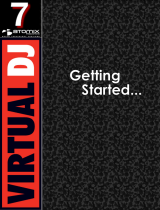 Virtual DJ Professional Professional Edition 7.0 Owner's manual
Virtual DJ Professional Professional Edition 7.0 Owner's manual
-
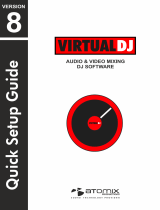 Virtual DJ Professional Virtual DJ 8 Owner's manual
Virtual DJ Professional Virtual DJ 8 Owner's manual
-
ATOMIX Virtual DJ 8 Owner's manual
-
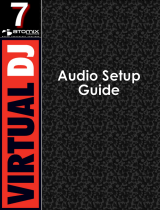 Virtual DJ Professional Professional Edition 7.0 Owner's manual
Virtual DJ Professional Professional Edition 7.0 Owner's manual
Other documents
-
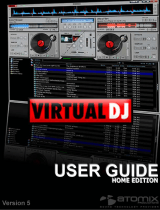 Atomix Productions Virtual DJ Home Edition 5.0 Owner's manual
Atomix Productions Virtual DJ Home Edition 5.0 Owner's manual
-
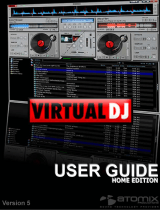 Atomix Productions Virtual DJ Home Edition 5.0 User guide
Atomix Productions Virtual DJ Home Edition 5.0 User guide
-
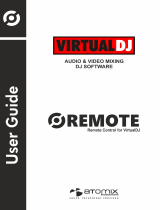 Atomix Productions Virtual DJ Remote User guide
Atomix Productions Virtual DJ Remote User guide
-
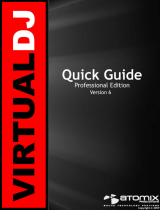 Virtual DJ Professional Professional Edition 6.0 User guide
Virtual DJ Professional Professional Edition 6.0 User guide
-
iON DJ Live Operating instructions
-
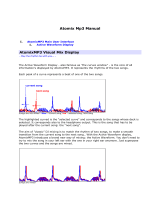 Atomix Productions Atomix mp3 User manual
Atomix Productions Atomix mp3 User manual
-
Hercules DJ Control MP3 e2 User manual
-
Hercules DJ Console 4-Mx Owner's manual
-
Hercules DJ Control Steel User manual
-
Hercules DJ Control MP3 User manual







































































